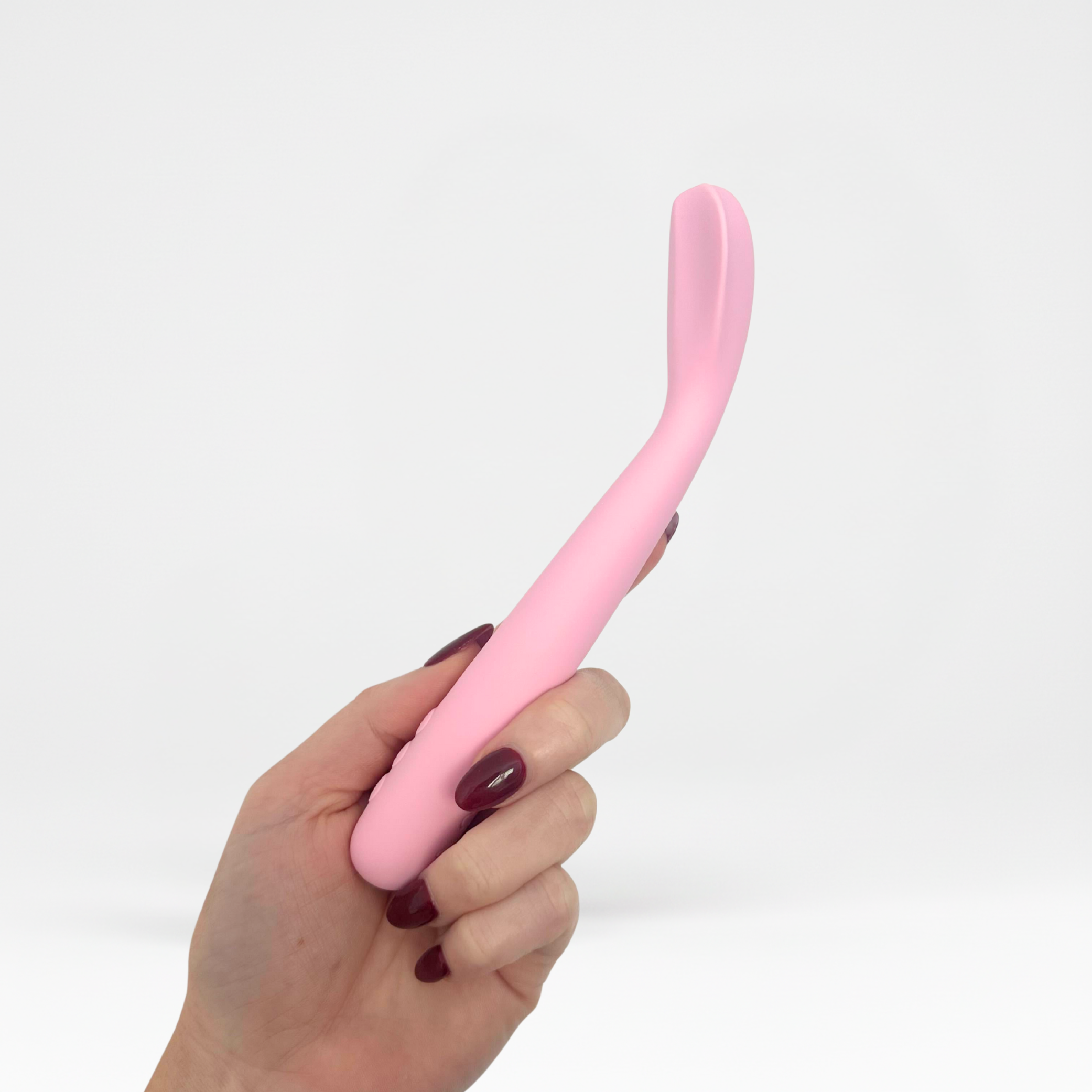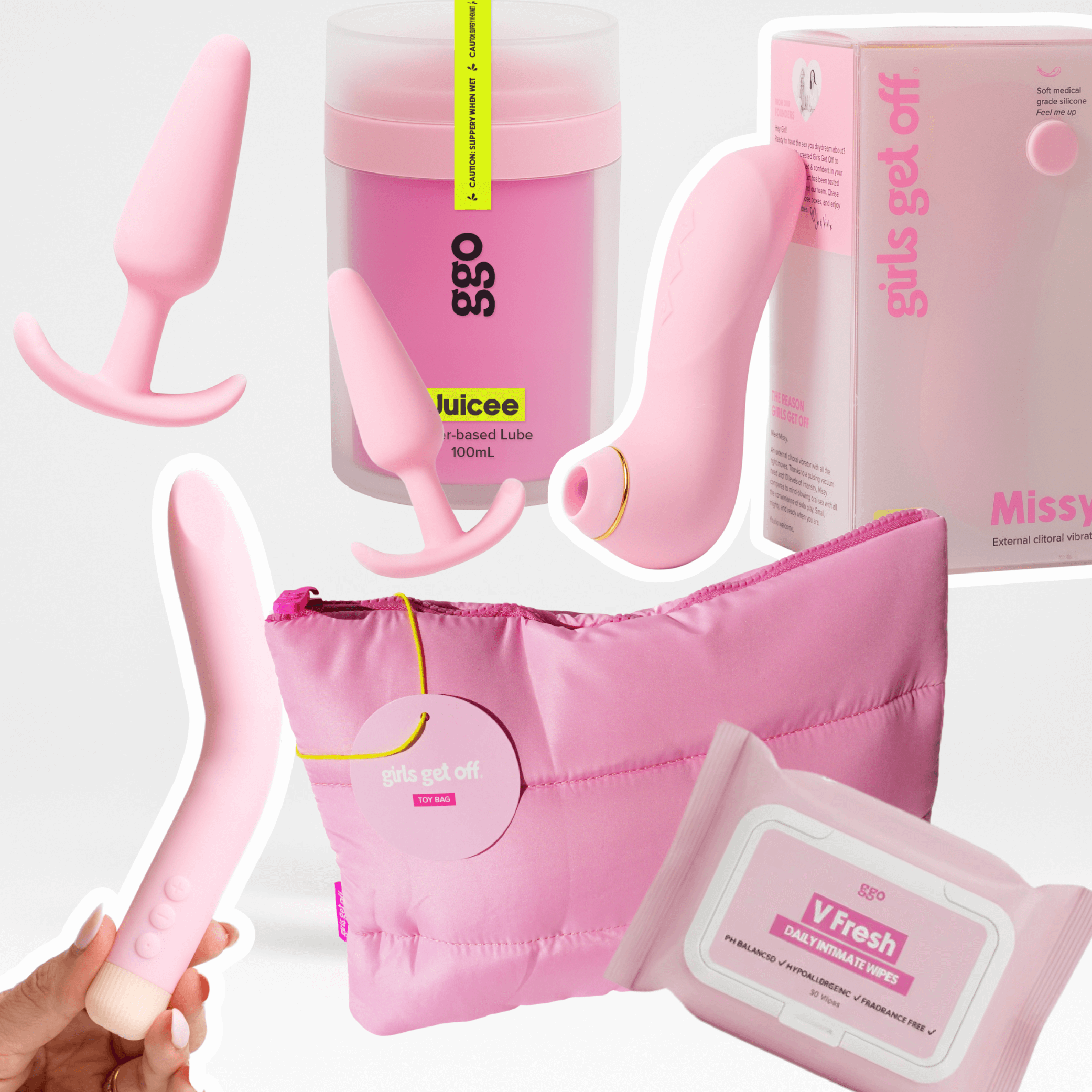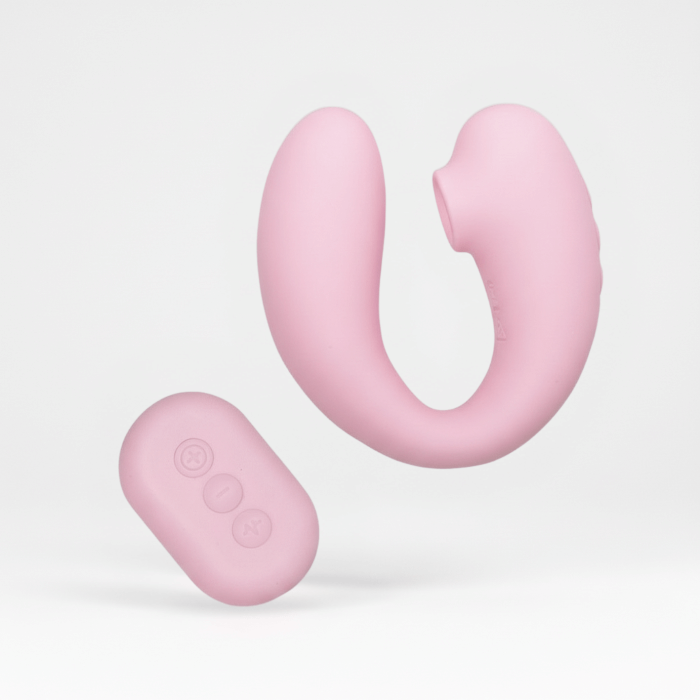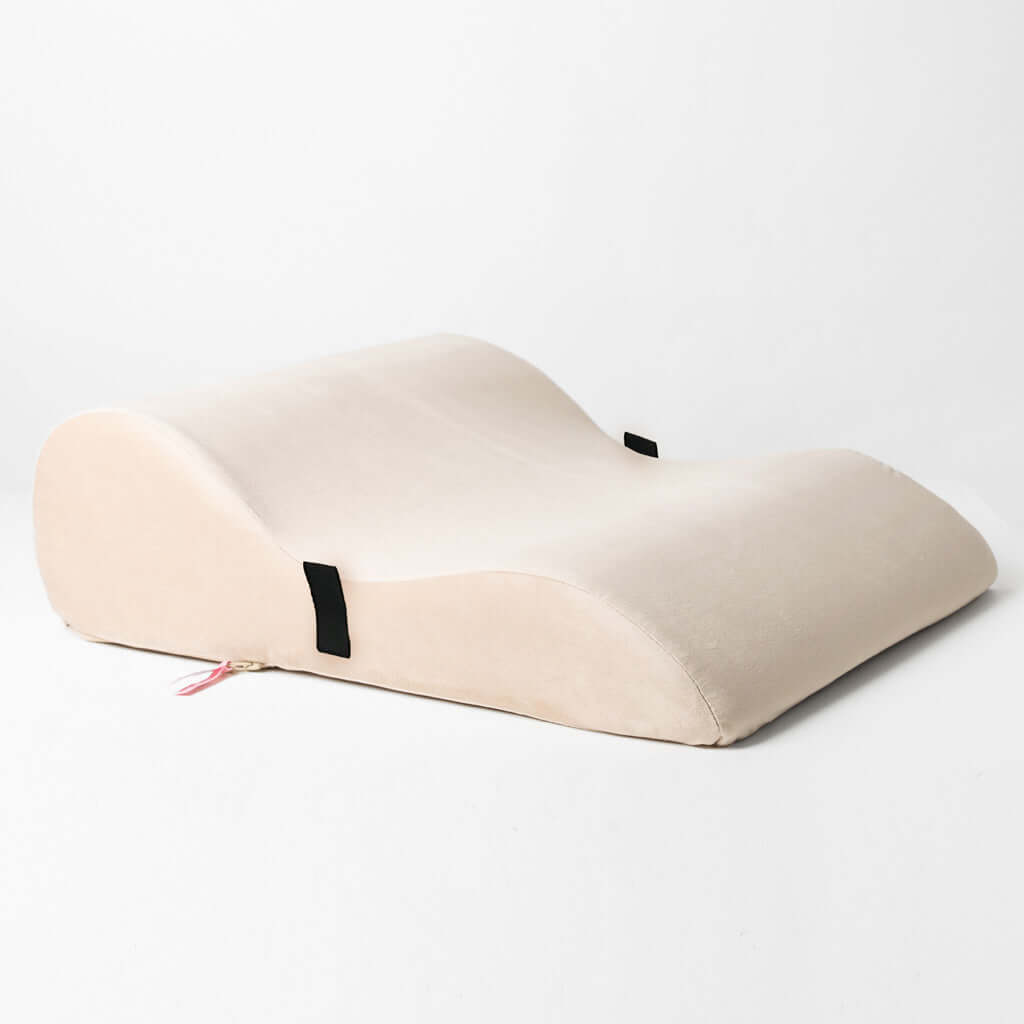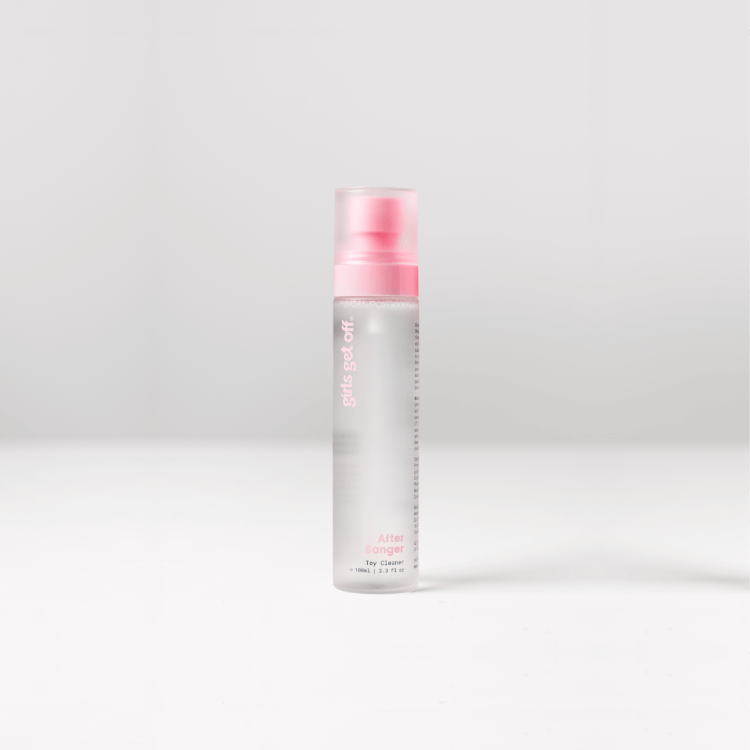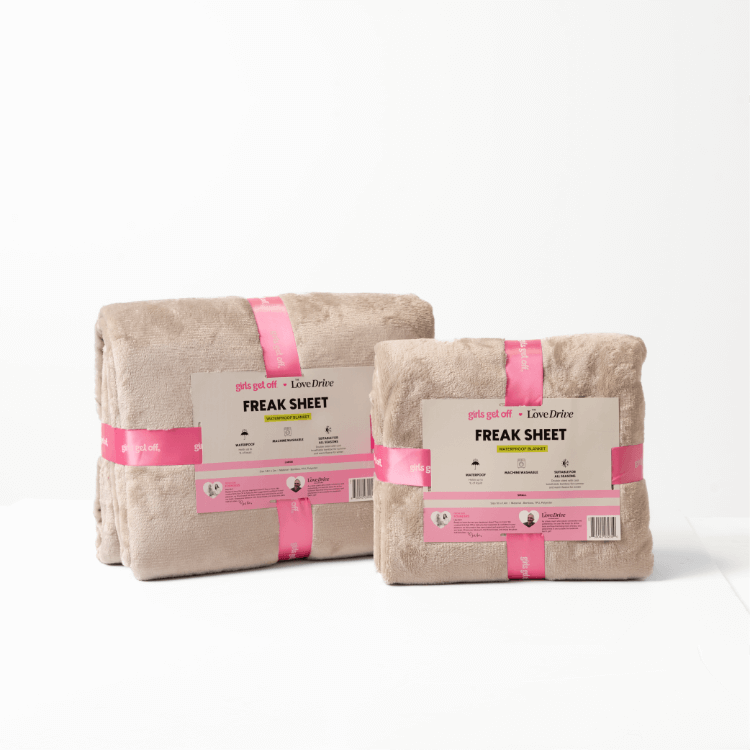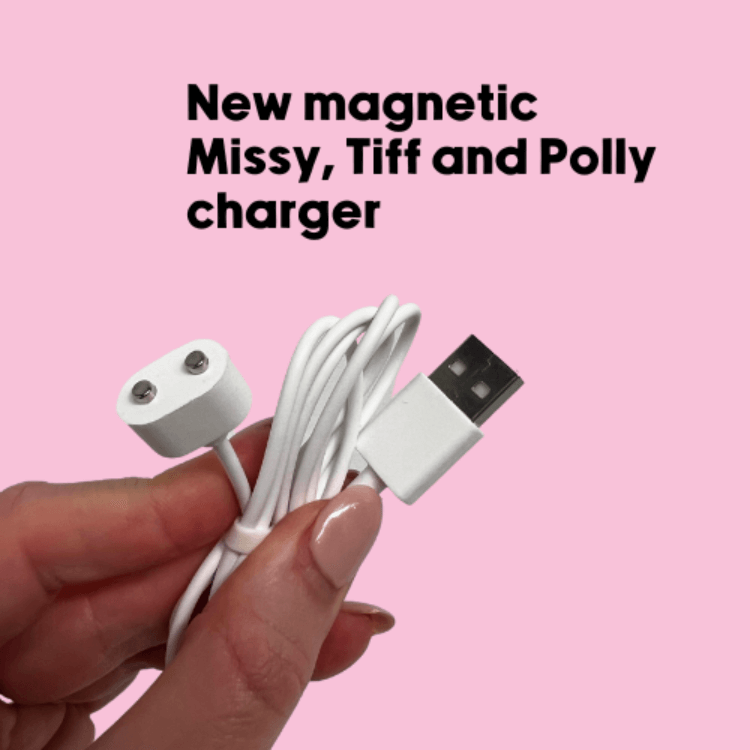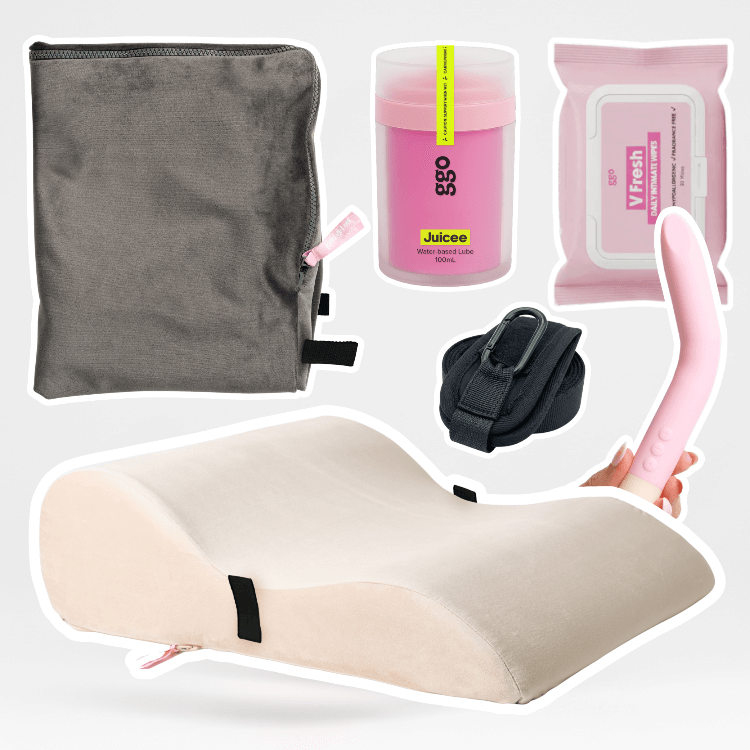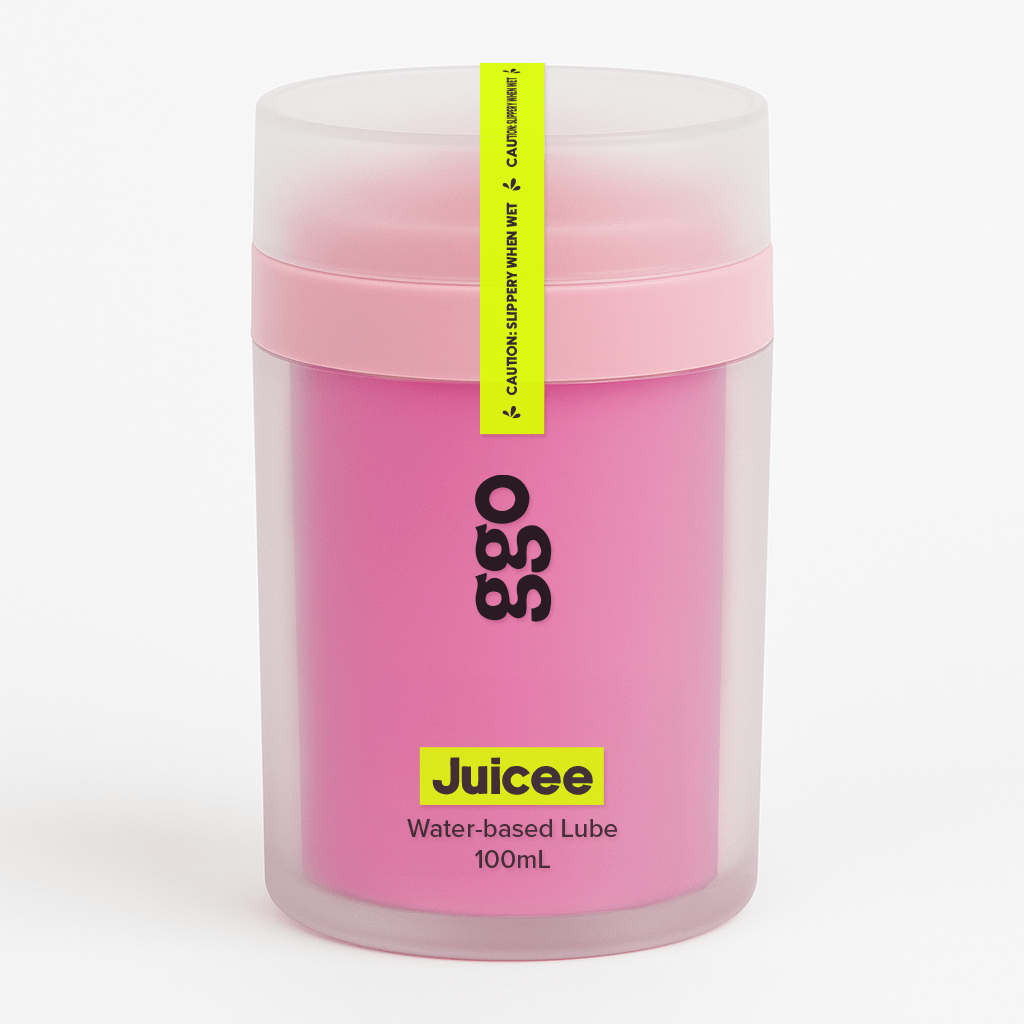You should orgasm from penetration alone.
Foreplay is overrated.
Female orgasms aren't a real thing.
If this year were set in the Hunger Games universe, we would officially be in a quarter-quell year. Thankfully, we don't live in a dystopian world, but we do live in a world where you've likely heard one (or all) of the above claims.
Before you get Google out because you smell something fishy, let us calm those cortisol levels, queens. Those pesky sentences are more fictional than Katniss Everdeen.
Sad news, though. They spread like wildfire, and that is a huge loss for everyone, but especially women and us at Girls Get Off, as we are all about championing a big O and breaking down stigmas.
So, in the essence of being your pleasure godmother, let's bust some big-O myths together.
WHAT DOES THIS ARTICLE INCLUDE? |
|
First Things First, Though, What is a Female Orgasm?
Big-O's come in many shapes, sizes and feelings. From your body recreating the big bang to a spicy electric shock racing from the tips of your toes to the top of your head, there is no right way to experience the most pleasurable moment of all.
There is a certain way to describe it, though. According to Healthline, the female orgasm can be clitoral, vaginal or cervical and is an intense feeling of pleasure that results in 'increased blood flow to your genitals, faster breathing and heart rate, and muscle contractions.'
It can last anywhere between 13 to 51 seconds, with the average lasting between 10-30 seconds.
And they are just your Queen V related O’s. Thanks to all those extra sensitive areas around your body called Erogenous zones, your body is a literal wonderland, and certain touches can provoke toe-tingling sensations.
You can also orgasm through nipple play, or if you're feeling a bit peach-curious, we have it on good authority that anal orgasms are the bee's knees.
How Do You Have an Orgasm?
There are many ways to have a big O, and they usually involve direct or indirect stimulation of your sexual organs.
To have a clitoral orgasm, you can go solo and use your fingers to rub the area in a circular, up-and-down or side-to-side motion. You can also use a vibrator like Missy, Wanda or Polly, or if you’re playing with a partner, they can also use a toy, their fingers or perform oral sex.
For a vaginal orgasm, it’s much the same as a clitoral orgasm with fingers, a penis or sex toy perfect for the job. Our fave way to play with our Queen V is with Elle. She’s a double-ended glass wand with a bulb on either end that will massage your G-spot area, creating toe-tingling sensations.
If you’re looking to have a cervical big O, you want to combine the two options above. Grab Elle or your partner and try doggy style, going extra deep with the help of a sex pillow like Bumpy Cuddles, and combine it with clitoral stimulation.
Anal big O’s are also super fun and come from penetration or stimulation of the anus. You can use Peaches or Elle for this, or your partner could use their fingers, penis or dildo - just make sure you use heaps of lube.
There are many other ways to big O as well, it all comes down to how you like to play.
Myth |
True/False |
|
Vaginal orgasms are better than clitoral orgasms |
FALSE |
|
The G-spot doesn’t exist |
True-ish (its existence and role are debated) |
|
Having an orgasm is easy for women |
FALSE |
|
All women can orgasm the same way |
FALSE |
|
Women can only orgasm through penetration |
FALSE |
Okay, now we're all up to speed, here are 3 female orgasm myths debunked:
1. Vaginal Orgasms are Better Than Clitoral Orgasms
Queens, put your hand up if you've ever had a vaginal orgasm. If you see your hand above your head, congrats! Climaxing from vaginal stimulation is about as rare as finding love on Tinder.
According to Medical Xpress, 70 to 90% of women are 'unable to orgasm with penetration alone'. Those that can, suggest it is more likely to happen if they are on top.
With this in mind, the myth becomes subjective to the person. If you can have a vaginal orgasm, you may very well think it is better than a clitoral one, but with a tiny percentage of people being able to have them, we're inclined to say a clitoral orgasm is better.
SUMMARY: |
|
2. The G-spot Doesn't Exist
Back in 2020, when we were stockpiling toilet paper, sex toys and making whipped coffee for TikTok videos, Cosmopolitan announced they wouldn't publish any more G-spot sex positions because, after talking to multiple medical professionals and scientists, it became clear, the G-spot isn't real.
GASP.
In the 80s, Beverly Whipple, PhD, and her team determined the G-spot was a 'sensitive' 'small bean', and if you insert two fingers (or a penis or dildo) into your vagina and stroke long enough, you'll have a G-spot orgasm. After years of research, we know that that isn't exactly the case.
While the 'G-spot' itself can exist for women, its form is different for everyone.
In 2012, The Journal of Sexual Medicine declared the G-spot is actually an '8.1- by 3.6-millimeter "rope-like" piece of anatomy, a "blue" and "grape-like" sac'. Other researchers have also described it as 'the urethral sponge', 'a gland', and 'a bunch of nerves'.
Meanwhile, Nicole Prause, PhD, a neuroscientist who studies orgasms, told the outlet that she doesn't think there is 'any evidence' that the G-spot is a spot at all simply because every single woman's body, especially their sexual organs, are different.
And the news outlet's readers agreed. Taking part in a survey, half said yes to having found their G-spot, while the other half became frustrated at their lack of findings. This ultimately resulted in the outlet telling their readers that it doesn't exist, but it also doesn't clearly exist.
SUMMARY: |
|
3. Having an Orgasm is Easy For Women
Ahhh, the old easy O debate. With a mountain of denominators determining female orgasms, we're going to go ahead and say it isn't always easy for women to orgasm (unless it's with Missy Mini…kidding).
According to Dr Salena Zanotti, who spoke to Cleveland Clinic, only a teeny tiny 10% of women can easily climax, and the reason why has absolutely nothing to do with you and more to do with the conditions you're working with. Dr Zanotti says there are a lot of factors to consider when reaching that glorious big O.
'Your mind needs to stay clear and focused. Your nerves need to remain sensitive, and blood needs to flow to all the right places,' She said. 'There are mental, emotional and physical aspects to sex, and, unfortunately, a variety of problems can interfere with getting to orgasm.'
It's a pretty big ingredients list, and ticking everything off can be made all the easier or more difficult, depending on your situation. If you're on certain medications, experience certain medical conditions, or have hormonal deficiencies, you may find it harder to have a big O.
Thankfully, there are things you can do to make it easier.
One thing you can do is speak to your healthcare provider, there are medications or practices they can prescribe to help you. You can also try libido supplements like our best-selling Afternoon Delighters.
For some people, difficulties in the big-O department could be less about medical conditions or lifestyle factors and more about your relationship with yourself or your partner. Trust and communication go a lot further in the bedroom than a toy ever could, which is why it's also essential to check in with your partner and have a deep and meaningful chat.
SUMMARY: |
|
To check out more Girls Get Off blogs, visit our website here.
